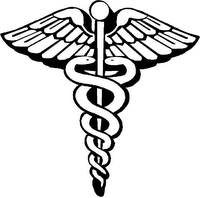Detect cervical cancer at early stage
According to the American Cancer Society, more than 1,400,000 people in the United States were diagnosed with cancer last year.Misdiagnosed Cervical Cancer Symptoms - Diagnosis Malpractice Lawsuit Attorney
February is "National Cancer Prevention Month". By keeping yourself healthy, you can help prevent some types of cancer.
One of the types is cervical cancer. Cervical cancer can be detected by your gynocologist. It's important to have regular pap smears to prevent cervical cancer, which is caused by the STD human papillomavirus.
"In the united states, HPV counts for about 20 million new infections per year. In fact, about 80 percent of all women will acquire HPV by time they're 50-years-old," said Dr. Rodney Rocconi, U.S.A. Mitchell Cancer Institute.
Dr. Rocconi said sometimes HPV is asymptomatic, and if it's left untreated, some types can cause cancer. But with regular pap smears, at least once a year, cancer can be prevented.
"It usually develops over a period of years into a pre-invasive disease so there's some subtle changes that happens to the cervix that smolder for years without symptoms. So what's very important for women is to make sure they get their pap smears on time so that you can catch it in those pre-invasive states. When done so and done properly, those are always curable cases so it's very important," he said.
If a woman does develop abnormal cells on her cervix, and the cells are detected early on, they can be destroyed.
"Treatment for pre-invasive disease is quite easy. It involves either laser, freezing the cells, sometimes even removing parts of the cells like a biopsy. And those types of surgeries can preserve fertility which is important in the young patient population. Early cervical cancers also have a fairly good cure rate as well," said Dr. Rocconi.
He said prevention is key. That's why it's so important for early screening. He also says women should spread the word to female friends and family to get screened, because it could save their lives.
Dr. Rocconi also suggests that woman get vaccinated against the cancer causing strains of HPV. The Gardasil vaccination has been approved by the FDA for girls as young as nine-years-old.
Labels: Cervical Cancer Awareness, Cervical Cancer Risks, Cervical Cancer Screening







